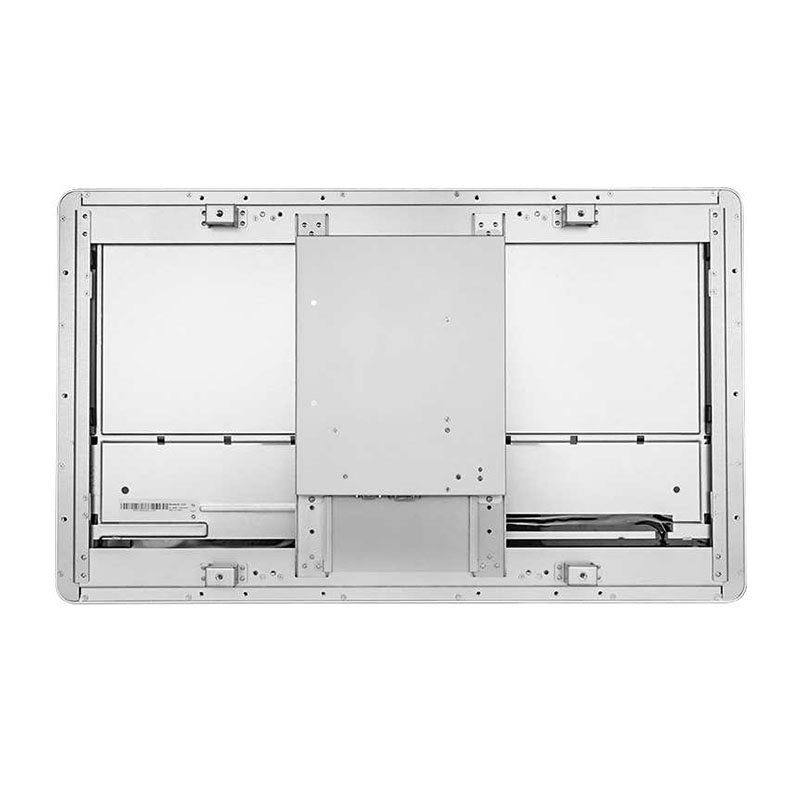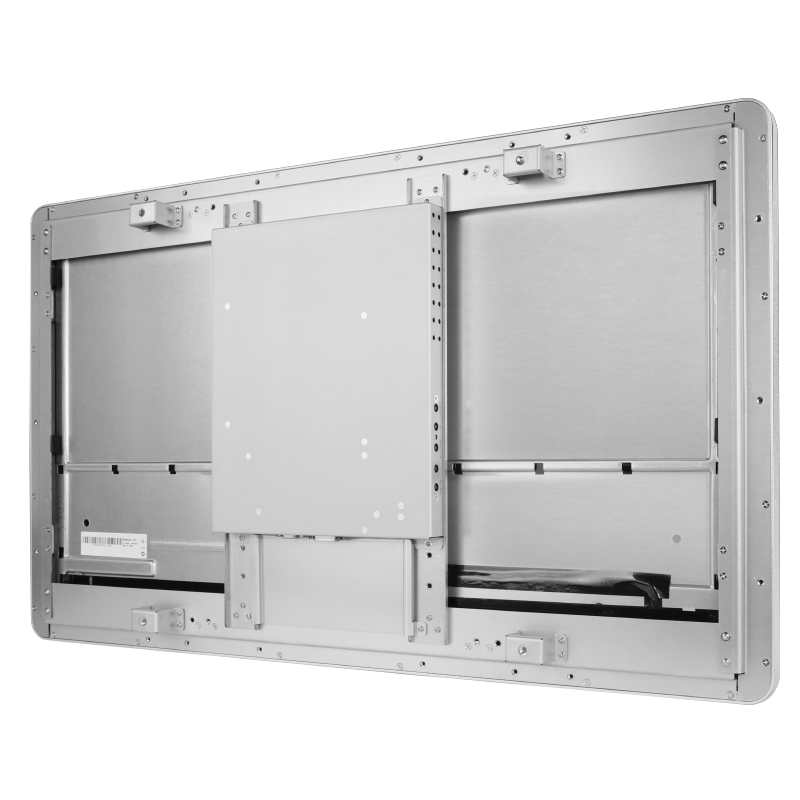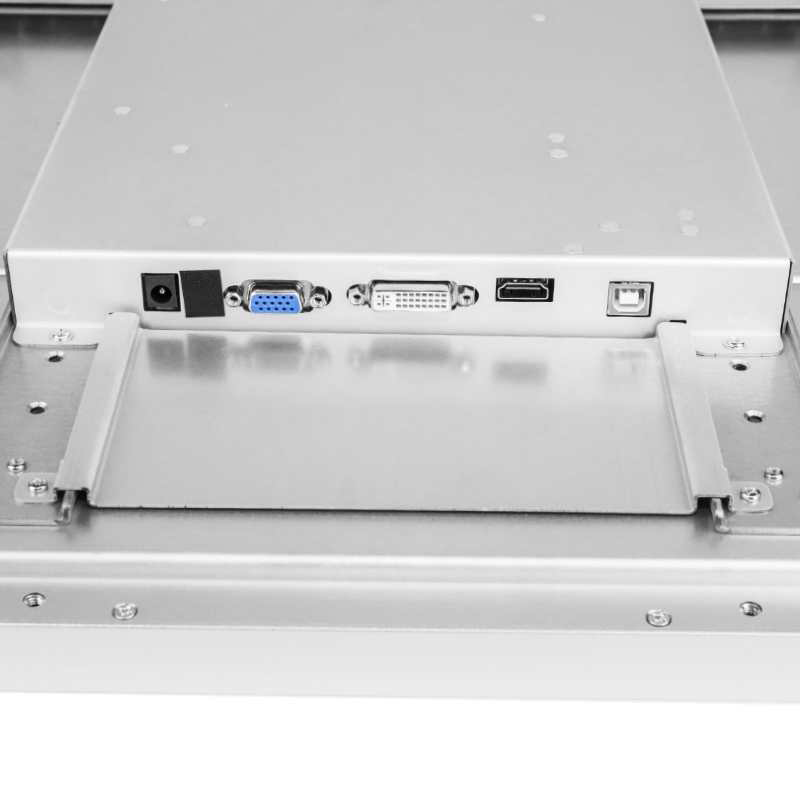32-inch Pcap Touch Monitor for ATMs: 16:9 Ratio
Featured Specifications
● Size: 32 inch
● Maximum Resolution: 1920*1080
● Contrast Ratio: 1000:1
● Brightness:280cd/m2 (no touch); 238cd/m2(with touch)
● View Angle: H:85°85°, V:80°/80°
● Video Port:1*VGA,1*HDMI,1*DVI
● Aspect Ratio: 16:9
● Type: Open Frame
Specification
| Touch LCD Display | |
| Touch Screen | Projected Capacitive |
| Touch Points | 10 |
| Touch Screen Interface | USB (Type B) |
| I/O Ports | |
| USB Port | 1 x USB 2.0 (Type B) for Touch Interface |
| Video Input | VGA/DVI/HDMI |
| Audio Port | None |
| Power Input | DC Input |
| Physical Properties | |
| Power Supply | Output: DC 12V±5% External Power Adaptor
Input: 100-240 VAC, 50-60 Hz |
| Support Colors | 16.7M |
| Response Time (Typ.) | 8ms |
| Frequency (H/V) | 37.9~80KHz / 60~75Hz |
| MTBF | ≥ 30,000 Hours |
| Power Consumption | Standby Power: ≤2W; Operating Power:≤40W |
| Mount Interface | 1. VESA 75mm and 100mm
2. Mount bracket, horizontal or vertical mount |
| Weight(N.W/G.W) | 0.2Kg(1 pcs) |
| Carton (W x H x D) mm | 851*153*553(mm)(1pcs) |
| Dimensions (W x H x D) mm | 783.6*473.5*55.2(mm) |
| Regular Warranty | 1 year |
| Safety | |
| Certifications | CCC, ETL, FCC, CE, CB, RoHS |
| Environment | |
| Operating Temperature | 0~50°C, 20%~80% RH |
| Storage Temperature | -20~60°C, 10%~90% RH |

Detail






After-sales service
● Keenovus offer 1 year warranty,any products from us with quality issue(exclude human factors) can get repaired or replacement from us during this period.All the quality issue terminals should take picture and be reported
● For the product maintenance,Keenovus will send the video for your reference.If necessary,Keenovus will send technical staff to train client's repairer if the cooperation is long term and with bulk quantities
● Keenovus will provide technical support for the whole product life.
● In case clients would like to extend warranty period in their market,we can support it.We will charge more unit price according to the exact extending time and models
Here's a detailed introduction to the installation and configuration of touch screens
Installation:
Mounting Options: Touch screens can be mounted in different ways, such as wall-mounting, table-mounting, or integration into kiosks or panels.
Connection: Connect the touch screen to the appropriate ports on your device, such as USB, or serial ports, using the provided cables.
Power Supply: Ensure that the touch screen is properly connected to a power source, either through a dedicated power cable or via USB if it supports bus-powered operation.
Driver Installation: Install the required drivers for the touch screen on your operating system. These drivers enable the system to recognize and communicate with the touch screen accurately.
Configuration:
Calibration: Perform touch screen calibration to ensure accurate touch detection. Calibration aligns the touch coordinates with the display coordinates.
Orientation: Configure the touch screen's orientation to match the physical placement. This ensures that touch input is correctly interpreted relative to the screen's orientation.
Gesture Settings: Adjust the gesture settings if the touch screen supports advanced gestures like pinch-to-zoom or swipe. Configure gesture sensitivity and enable/disable specific gestures as needed.
Advanced Settings: Some touch screens may offer additional configuration options like touch sensitivity, palm rejection, or pressure sensitivity. Customize these settings based on user preferences and specific requirements.
Testing and Troubleshooting:
Test Functionality: After installation and configuration, verify that the touch screen is functioning correctly by performing touch tests across the entire screen surface.
Driver Updates: Regularly check for driver updates from the manufacturer's website to ensure compatibility with the latest operating system updates and optimize performance.
Troubleshooting: If you encounter any issues, refer to the troubleshooting guide provided by the manufacturer. Common troubleshooting steps include driver reinstallation, recalibration, or checking cable connections.








